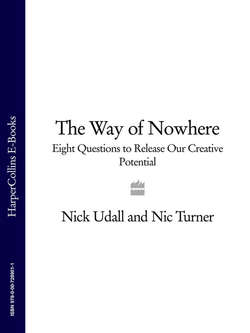Читать книгу The Way of Nowhere: Eight Questions to Release Our Creative Potential - Nick Udall - Страница 14
Оглавлениеhow to use the wheel
Before we dive into the breakthrough questions themselves, let us suggest how best to use the wheel.
This book has two interconnected halves, one looking at ways of releasing my creative potential and the other looking at ways of releasing our creative potential. Within each half of the book there are eight chapters, one for each direction of the wheel. In line with tradition, we start in the East and move clockwise around the wheel. At the end of each half of the book is a chapter looking at what it means to stand in the centre of our circle. And in the middle of the book is the final chapter leading us to the Way of nowhere.
Each of the main chapters is dedicated to a breakthrough question. The eight questions are:
e what is my unique purpose… ?
se how am I releasing the magic of the moment… ?
s how am I venturing into uncertainty… ?
sw how am I focusing the power of my intent… ?
w how am I supporting growth… ?
nw how am I learning to see the invisible… ?
n how am I returning my gift… ?
ne how am I keeping my energy clear and bright… ?
Each is followed by a two-verse haiku.10 These haiku are designed as poetic summaries of each direction. Each line forms the essence of a key aspect of the breakthrough question.
The first verse of the haiku looks at the breakthrough question through the lens of the allied energy. The first line of the second verse looks at the breakthrough question through the lens of the distorted energy, and the second and third lines of the second verse offer views from the opposite and neighbouring directions of the wheel respectively.
For example:
Insights lie in the juxtaposition of the question and the commentaries.
Each chapter also introduces:
a Way of unlocking our creative and collective potential
an anecdote from a person who has had direct knowledge and experience of the Ways of nowhere
one or two micro-skills – ways of thinking or relating that can help release creative potential
We have intentionally chosen not to name those people who have offered their anecdotes. Their contributions are meant to offer alternative voices and perspectives. They are all inspiring people with whom we have enjoyed mutually nourishing relationships.
The book has not been written to be read in one sitting. Instead we invite you to work through one half of the book, making your way, question by question, chapter by chapter, to the middle. Let each chapter, each breakthrough question, soak in before moving on.
Once you find yourself in the middle of the book, start again from the other end, for neither side is complete without the other. Our success in the world is of little value unless we are developing ourselves, while self-development for its own sake can be indulgent unless we use it to create together.
Reading both sides of the book will enable you to fully extract the insights that lie at the centre, where the two halves come together. The book can then become an ongoing resource for practising the Way of nowhere.
Lastly, in the same way that we see ourselves in nowhere as creative-catalysts, we invite you to use this book to catalyse creative breakthroughs in your own life and in the lives of the people around you. Simply suspend disbelief and open yourself to new possibilities. By wandering with wonder through our co-creative universe, you will find amazing things starting to happen, as if by magic … out of nowhere.
10 A haiku is a minimalist form of Japanese poetry designed to convey an experience. It has a syllabic structure of 5–7–5, which is based on the utterance of a single breath.
